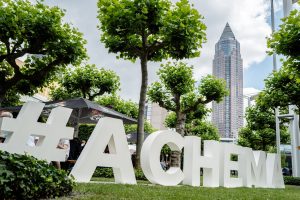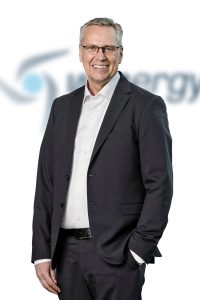Flender Uses Waste Heat from its In-House Hardening Facility to Heat Buildings

Central unit: the new heat pump. With a thermal output of 622 kW, it is 75 times more powerful than a standard heat pump in a detached house. (Image source: Flender International GmbH)
It is obvious that gearbox specialist Flender needs a lot of energy to operate its 26 hardening furnaces at the Bocholt site. Now, part of this energy is fed back into the process, and heats the site —another step on Flender’s journey towards more sustainable production.
Flender requires around 20 million kilowatt hours of electricity annually to harden 15,000 tons of geared component to ensure their surface quality. This is a significant amount of energy, and yet the gear manufacturer is by no means one of the energy-intensive companies such as steel mills or foundries. Only through the hardening process does the surface of the gears achieve the quality needed to ensure that gearboxes in applications, like wind turbines, run reliably and efficiently for decades. Energy to drive the energy transition, so to speak.
For several years, Flender’s building and facility management team has been exploring ways to reuse this energy. For a long time, the technology required was lacking. "With the launch of the new heat pump, we can transfer the waste heat generated when cooling the hardening furnaces to the site’s heating system. This is a unique process in this setup and scale," explains Project Manager Robert Iding.
The cooling water, at 32 degrees Celsius, heats the heating circuit water to the same temperature through a heat exchanger. The heat pump then heats this water to the 60 degrees Celsius required to heat the buildings. The process is comparable to that used in typical homes. The significant difference: with 622 kilowatts of thermal capacity, the heat pump installed at Flender is roughly 75 times more powerful than the standard heat pump in a typical single-family home. The water is then sent from the heating circuit back to the hardening shop. There it is reused at 22 degrees Celsius to cool the ovens and the cycle starts all anew.
The construction work took six months. In addition to the heat pump, new water pipes were laid from the hardening facility across the company site. The large heating distributor and part of the heating system were also updated. "We examined the entire periphery of the heating system to modernize the system and make it as energy efficient as possible," says Iding.
The impact is substantial. Flender now heats most of its halls and buildings in Bocholt using energy from the hardening process rather than conventional gas heating, saving nearly 2.4 million kilowatt hours of natural gas annually and reducing CO2 emissions by 400 tons.
"As an industrial company, we have a large responsibility to society and our climate to make our production as sustainable as possible. Those who have followed our activities in recent years know how committed we are to driving industrial transformation. Numerous projects have reduced our resource consumption and carbon footprint. This new heating method is another major milestone in reaching our self-imposed goals - a success everyone involved can be proud of," says Flender CEO Andreas Evertz.
"The new heating system is a long-term investment that pays off. We are reducing our energy consumption and setting another positive example in the industry. With the reduced gas consumption, the project also makes perfect economic sense," says Kimberley ten Broeke, Head of Corporate Social Responsibility (CSR) at Flender, who coordinates all of the company's sustainability activities.
Source: Flender International GmbH







